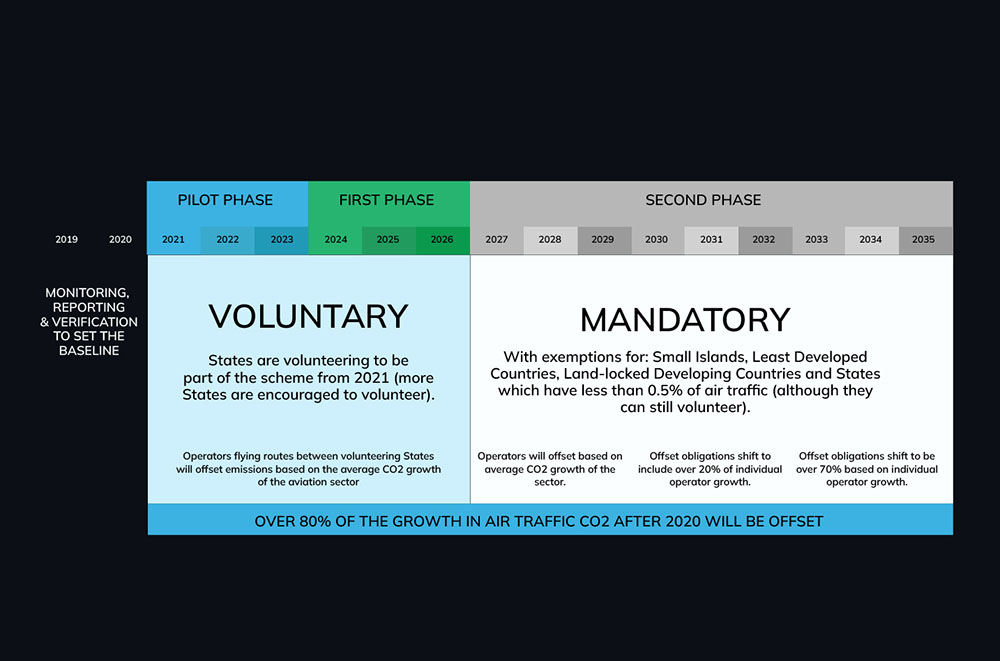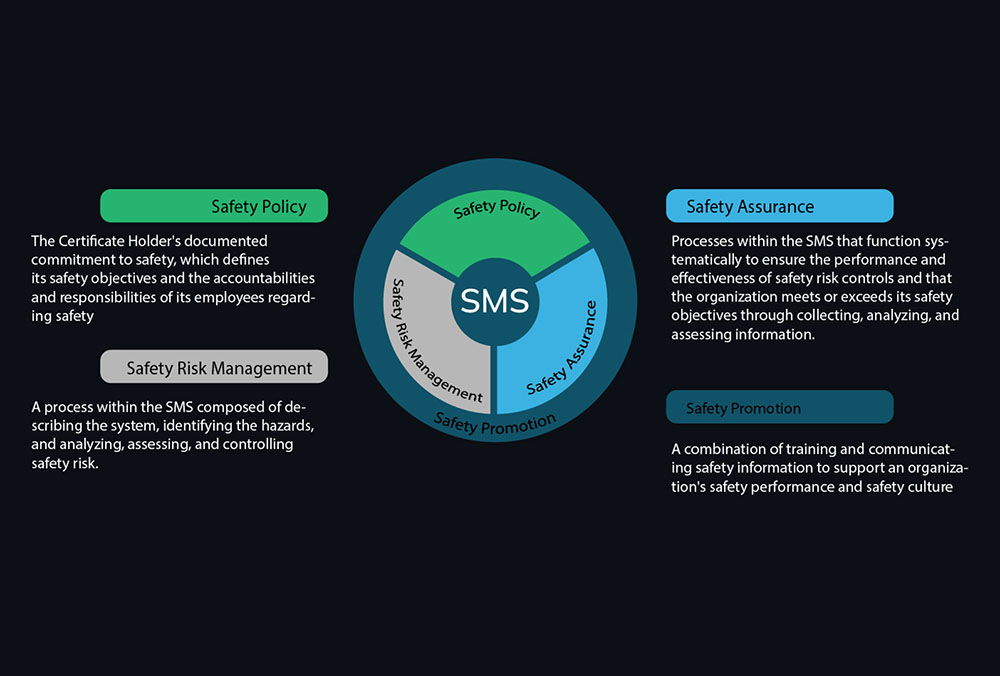The Influence of ICAO Standards on Business Jet Operators
02 April 2025
| By Just Aviation TeamThe International Civil Aviation Organization (ICAO) continually evolves its regulatory framework to address emerging challenges in aviation safety, environmental sustainability, and operational efficiency. The Influence of ICAO Standards on Business Jet Operators is evident in the updates to ICAO standards, particularly those introduced under Annex 6 (Operation of Aircraft), Annex 16 (Environmental Protection), and Annex 19 (Safety Management). These revisions have brought significant changes for business jet operators in recent years, requiring meticulous adjustments to flight operations, aircraft modifications, and compliance strategies.
1. Carbon Offsetting and Reduction Scheme for International Aviation (CORSIA)
CORSIA, the primary carbon offsetting program under ICAO Annex 16, Volume IV, mandates carbon-neutral growth for international flights starting in 2021. Phase 1 (2021–2023) served as a pilot period, while Phase 2 (2024–2026) expanded participation to all ICAO member states. Business jets emitting more than 10,000 metric tons of CO₂ annually must comply with monitoring, reporting, and offsetting requirements to mitigate their environmental impact.
Operational Impact
- Fuel Efficiency Optimization: Operators must adopt advanced flight planning tools to minimize fuel burn. Techniques such as cost-index optimization, dynamic altitude selection (e.g., using Eurocontrol’s Base of Aircraft Data), and continuous descent operations (CDOs) are critical. For example, Gulfstream G650 operators have reduced fuel consumption by 12% using real-time wind routing algorithms.
- Sustainable Aviation Fuel (SAF) Integration: SAF blends exceeding 30% require engine compatibility validations. Honeywell HTF7000 engines, used in Bombardier Challenger 350s, now support up to 50% SAF without performance degradation.
Operators can leverage the ICAO CORSIA CO₂ Estimation and Reporting Tool (CERT) to automate data submission. Fleet modernization, such as transitioning to Dassault Falcon 8X aircraft with 35% lower fuel burn compared to legacy models, which are long-term offsets.
2. ICAO’s Global Air Navigation Plan (GANP) for 2025
The Global Air Navigation Plan (GANP) serves as ICAO’s strategic framework for modernizing global air traffic management (ATM) systems to enhance efficiency, safety, and interoperability. This long-term vision includes the implementation of advanced technologies and operational improvements to support the growing demands of air traffic worldwide. By 2025, business jet operators will be required to comply with updated performance-based navigation (PBN) standards, which aim to optimize airspace use through more precise routing and enhanced operational flexibility.
Key Requirements
- PBN Implementation: RNAV 2 and RNP 1 will become mandatory in high-density airspace, such as Europe and North America.
- Data Link Communications: Operators must equip aircraft with FANS 1/A+ (Future Air Navigation System) to support Controller-Pilot Data Link Communications (CPDLC) and Automatic Dependent Surveillance-Contract (ADS-C).
Operational Adjustments
- Retrofitting older business jets, such as the Cessna Citation XLS+, with FANS-compatible avionics will be necessary.
- Operators must train pilots and dispatchers on PBN procedures, including curved approaches and radius-to-fix (RF) legs.
3. Enhanced Surveillance: ADS-B Out Mandates
ICAO Annex 6 mandates Automatic Dependent Surveillance-Broadcast (ADS-B) Out compliance for all aircraft operating in ICAO Class A and B airspace by January 2023. This aligns with FAA 14 CFR §91.225 and EASA IR 2020/1173 requirements, ensuring enhanced aircraft tracking and communication. ADS-B requirements & regulations for flight operators are designed to improve air traffic management, increase situational awareness, and enhance overall flight safety by providing real-time aircraft position data to air traffic controllers and other equipped aircraft.
Technical Requirements
- Avionics Upgrades: Legacy business jets, such as the Cessna Citation CJ2, need DO-260B-compliant transponders (which enhance ADS-B accuracy and communication with air traffic control) and WAAS-enabled GPS receivers for precise navigation. These upgrades ensure compliance with modern airspace requirements and prevent operational restrictions.
- Data Integrity: Ensuring the accuracy and reliability of Position, Navigation, and Timing (PNT) data is critical for safe and efficient flight operations. Business jet operators must validate PNT data through rigorous testing protocols established under RTCA DO-316, which provides industry standards for assessing the integrity of navigation systems.
Operational Benefits
- Improved ATC Routing: ADS-B enables reduced separation minima (3 NM in en-route airspace), optimizing routes in congested regions like the North Atlantic Track System (NATs).
- Enhanced Situational Awareness: Integration with cockpit displays allows real-time traffic and weather updates, reducing pilot workload.
Operators should perform gap analyses using the FAA’s ADS-B Performance Monitoring Unit (PMU) to assess compliance requirements and identify necessary installation upgrades. For fleets that cannot be upgraded immediately, leasing ADS-B-compliant aircraft—such as the Pilatus PC-24—can serve as a temporary solution to maintain operational efficiency and regulatory adherence.
4. Safety Management Systems (SMS) under ICAO Annex 19
ICAO Annex 19 mandates SMS implementation for all operators, including business jets, by January 2024. Implementing Safety Management Systems (SMS) for business flight operations requires a proactive approach to risk management, focusing on hazard identification, safety assurance, and continuous improvement. These systems help operators enhance operational safety by systematically identifying potential risks, implementing mitigation strategies, and fostering a strong safety culture within flight departments.
Operational Integration
- Risk Assessment Tools: Operators must adopt quantitative risk models, such as Bowtie Analysis, to evaluate threats like runway excursions or mid-air collisions. For instance, a Bombardier Global 6000 operator reduced taxiway deviations by 40% using SMS-driven crew resource management (CRM) training.
- Data-Driven Decision Making: Integration of Flight Data Monitoring (FDM) systems, such as Teledyne’s Universal Flight Data Recorder, enables predictive maintenance and trend analysis.
EASA’s AMC1 SPA.GEN.200 is an Acceptable Means of Compliance (AMC) that provides a structured framework for operators to develop and document their Safety Management System (SMS). It outlines key components such as risk management, safety performance monitoring, and continuous improvement to ensure compliance with regulatory safety standards.
To verify adherence to these requirements, third-party aviation safety auditors assess an operator’s SMS implementation, focusing on critical safety performance indicators (SPIs). These SPIs may include exceedance rates, incident reporting trends, and operational risk assessments. Auditors evaluate how effectively an operator identifies, mitigates, and tracks safety risks, ensuring a proactive approach to maintaining high safety standards in aviation operations.
5. Noise Certification Requirements (ICAO Chapter 14)
Effective from January 2023, ICAO Chapter 14 introduces more stringent noise limits for new aircraft type certifications, requiring a cumulative noise reduction of -7 EPNdB (Effective Perceived Noise in Decibels) compared to Chapter 4 standards. These regulations aim to minimize aviation-related noise pollution, particularly in urban areas with high air traffic density.
To comply with these stricter requirements, aircraft manufacturers have incorporated advanced noise-reduction technologies. Engine modifications, such as acoustic liners and chevron nozzles, help mitigate noise emissions. These innovations improve noise absorption and reduce jet turbulence, aligning with Chapter 14 thresholds.
Many noise-sensitive airports, such as London Luton (LLA), have implemented stricter nighttime noise quotas. These restrictions require operators to modify their flight schedules or adopt alternative operational techniques, such as steeper approach profiles (e.g., 5.5° glide paths), to minimize noise exposure for surrounding communities.
Operators can adopt ICAO’s balanced approach to noise abatement practices, which involves negotiating noise budgets with airport authorities, investing in quieter aircraft, and optimizing flight operations. Implementing proactive noise management strategies ensures regulatory compliance while maintaining operational flexibility in noise-sensitive regions.
FAQs
- How do the new ICAO Annex 6 requirements for flight data recorders (FDRs) affect business jet operations?
ICAO Annex 6 now mandates that business jets with a maximum takeoff weight (MTOW) above 27,000 kg must be equipped with a flight data recorder capable of storing at least 25 hours of data. For smaller jets, such as the Cessna Citation CJ3+, operators must ensure compliance with EASA’s new FDR requirements, which include recording additional parameters like autopilot status and flap position.
- What are the implications of ICAO’s new fuel tank safety standards for business jets?
ICAO’s updated fuel tank safety standards, aligned with FAA SFAR 88 and EASA CS-25, require operators to implement enhanced flammability reduction measures. This includes installing nitrogen generation systems (NGS) to inert fuel tanks and reduce oxygen concentration below 12%. For example, Bombardier Global 7500 operators have integrated NGS to comply with these standards, significantly mitigating the risk of fuel tank explosions.
- How does ICAO’s new performance-based navigation (PBN) framework impact business jet route planning?
ICAO’s PBN framework mandates the use of RNAV (Area Navigation) and RNP (Required Navigation Performance) specifications in certain airspaces. Business jets operating in Europe, for instance, must comply with RNP 1 for terminal airspace and RNAV 5 for en-route navigation. Operators of aircraft like the Dassault Falcon 900EX must upgrade their avionics to meet these standards, often requiring installations of dual FMS systems to ensure redundancy and precision.
- What are the new ICAO requirements for crew training under the Multi-Crew Pilot License (MPL) framework?
ICAO’s updated MPL framework emphasizes competency-based training, requiring business jet operators to adopt advanced simulation technologies. For example, operators must now use Level D full-flight simulators (FFS) for recurrent training, focusing on different scenarios. Pilots transitioning to aircraft like the Embraer Praetor 600 must complete specific type rating programs that include virtual reality (VR) training modules to enhance situational awareness and decision-making skills.
The Influence of ICAO Standards on Business Jet Operators underscores the need for seamless compliance in business aviation. At Just Aviation, we assist operators in navigating ICAO’s evolving regulations, from ADS-B upgrades to CORSIA compliance and SMS implementation. Our expertise ensures that flight operations remain efficient, sustainable, and fully compliant with global standards. With tailored support in regulatory adherence, flight planning, and operational optimization, we help business jet operators maintain seamless operations worldwide. Trust Just Aviation to keep your flights ahead of regulatory changes, ensuring safety, efficiency, and compliance in an ever-evolving aviation landscape.

